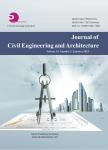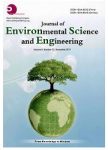
T=题名(书名、题名),A=作者(责任者),K=主题词,P=出版物名称,PU=出版社名称,O=机构(作者单位、学位授予单位、专利申请人),L=中图分类号,C=学科分类号,U=全部字段,Y=年(出版发行年、学位年度、标准发布年)
AND代表“并且”;OR代表“或者”;NOT代表“不包含”;(注意必须大写,运算符两边需空一格)
范例一:(K=图书馆学 OR K=情报学) AND A=范并思 AND Y=1982-2016
范例二:P=计算机应用与软件 AND (U=C++ OR U=Basic) NOT K=Visual AND Y=2011-2016

摘要:In the global context, the relationship between human beings and nature has been discussed in various fields of study. This paper introduced three of the important challenges in this relationship, which have, thus far, been only partially or implicitly acknowledged in design and planning. The aim was to elucidate the key disregarded and neglected aspects in the human-nature relationship that need to be considered in different phases of the design and planning of future projects. This paper will thus inform the designers and planners about the previously overlooked but important challenges in the human-nature relationship, which must be moved to the foreground of the design and planning processes. These challenges include the definition of the term “nature”, the reciprocal effects among scales and adhering to or going beyond environmental sustainability. As the main conclusion, the paper shows how these challenges can improve the mutually supportive interaction between human beings and nature in the field of design and planning. Specifically speaking, the paper discussed how to convert the overlooked challenges in the human-nature relationship into potentials in the design and planning process. The main applied methods for this paper were a review of the related literature and the appropriate analysis.

摘要:In the construction sector, which is one of the major goals of the new economy, the company is aiming at a new constructive practice and upgrading of the built, using ICT (information and communications technology) technologies. So the focus is on new operating and organizational models of sustainable building processes in the architecture, engineering and construction sectors, which are based on three-dimensional models of digital technology BIM (building information modeling). It is intended as a human activity that improves building workflows and, through software and IFACs (industry foundation classes), manages flexibility, coordinates and optimizes operational choices on time, economic, and environmental sustainability.parameters. The goal is a new interoperable building process that involves designers, contractors and businesses from programming to lifecycle building and maintenance through the integrated project delivery of the building. Dynamic architectures, interactive with efficient technological and constructive systems, are integrated with innovative products of complex nature and bi-directional performance, engineered, with energy storage and renewable resources. The methodologies are based, above all, on the adoption of BIM technologies with the digital project manager and the use of robotic technological tools. Digitization is applied for the design and construction of architectural and infrastructure artifacts, in interaction with intelligent, adaptive, nanotechnical and user-friendly materials and climate. The results are aimed at efficient buildings with user comfort and safety, accuracy, and risk monitoring with remote monitoring, highlighting VDC (visual design construction) in CID (computational intelligent design).

摘要:Rain water harvesting offers a wealth of promising possibilities for many countries. This paper describes a study in which rainwater harvested from the rooftop is used for recharging groundwater in a household well in Ibadan. A rainwater harvesting structure was designed to be 1.2 m deep, 2.6 m long and 0.66 m wide, filled with gravel and fine sand at different layers. Rainwater harvested in a storage tank is passed with the aid of a hose pipe to the rainwater harvesting structure on a daily basis to recharge the groundwater in the well. A well in the neighborhood serves as control for this experiment, which went on for a month. The volume of rainwater used to recharge the groundwater in the well was recorded daily for the study period. The results indicated that using rainwater to recharge the groundwater in the well led to conservation of the water in the well through reduced evaporation. Thus, the well yields water all the year round as compared to the control well that dries up during the dry season.
地址:宁波市钱湖南路8号浙江万里学院(315100)
Tel:0574-88222222
招生:0574-88222065 88222066
Email:yzb@zwu.edu.cn

